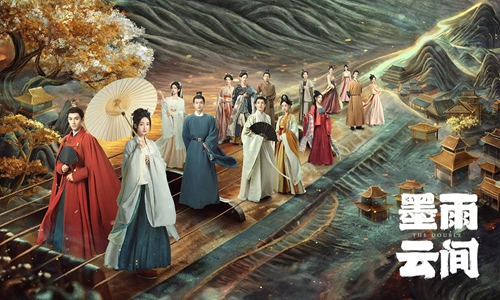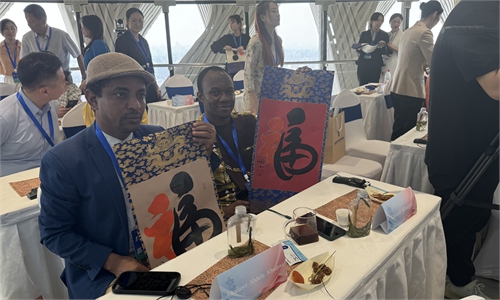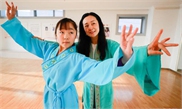ARTS / CULTURE & LEISURE
Blend of traditional tea culture and modern fashion wins hearts of young consumers
New taste
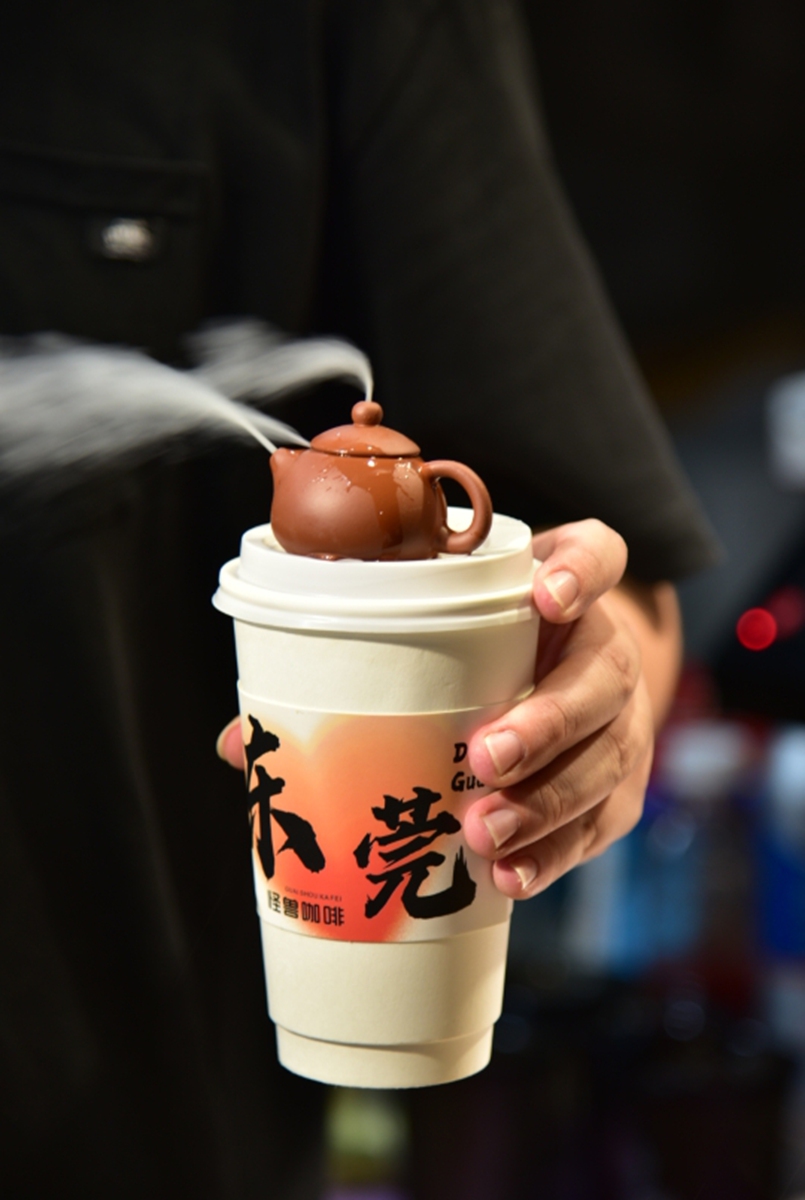
A cup of Smoking Teapot Milk Tea Photo: VCG
The topic "Post-1990 founder brings Chinese tea to the world" began trending on social media recently after the founder of a new Chinese-style tea brand made headlines with his innovative ways of promoting the Chinese tea culture to the global stage.The brand's exquisite packaging has won the hearts of countless young people, and the Chinese designs included in their products, such as a red bottle and magnolia flowers, are part of efforts to highlight traditional Chinese culture.
New Chinese-style tea drinks are a blend of traditional Chinese tea culture with modern fashion. They include not only traditional tea beverages but also various creative tea drinks, such as fruit tea, milk tea, and tea lattes, emphasizing the use of organic ingredients and healthy options.
Fan Shenghua, who is an inheritor taking part in the National Intangible Cultural Heritage Project "West Lake Longjing Tea Harvesting and Processing Techniques," told the Global Times on Tuesday that the boom of new Chinese-style tea drinks is good news for the overall tea beverage industry.
"New Chinese-style tea drinks have broadened the collaborative models of traditional tea beverages and have played a role in promoting traditional tea culture," Fan said.
"From our recent collaborations with Chinese tea drink brands Nayuki's Tea and Master Kong, it is undoubtedly clear that this has driven the development and visibility of the traditional tea industry," Fan noted.
New Chinese-style tea drinks have become a favorite companion for lots of young consumers, with topics such as "the first cup of milk tea in summer" and "socializing over stove-brewed tea" recently going viral on Chinese social media platforms.
Li Qi, a 26-year-old working at a foreign insurance company in Shanghai, is an avid fan of new Chinese-style tea drinks. No matter how busy she is, she never misses the seasonal limited-edition milk teas.
"'The first cup of milk tea in summer' is such a creative event, adding special significance to each season. Releasing different flavors for each season always brings new excitement," Li told the Global Times.
"There are many types of new Chinese-style tea drinks, and there's always a new flavor and combination to try. Whether it's milk cap tea, fruit tea, or innovative combinations, we always find something new," Li said.
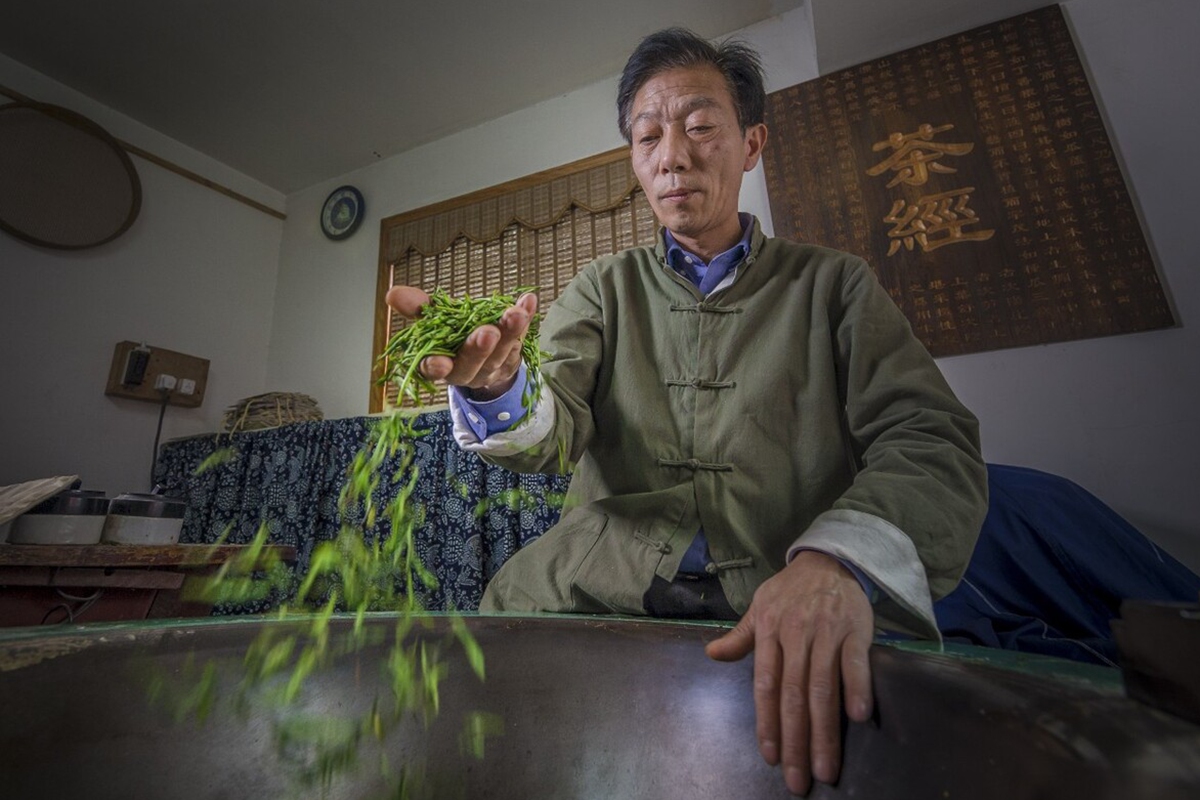
Fan Shenghua pan-fries tea leaves. Photo: Courtesy of Fan Shenghua
New interpretations on traditionWhen Chinese brand ShanZhuCha's Guochao tea drink "Lanting Xu 2.0" was released in November, it quickly dominated social media platforms, selling more than 20,000 cups on the first day and continuing to top the charts.
The overall share of new Chinese-style tea in the tea drink industry is steadily increasing.
"In 2023, the market size for new Chinese-style tea drinks reached 193.3 billion yuan ($26.6 billion), an increase of 15.7 percent year-on-year. It is expected to approach 250 billion yuan by 2025," market analyst Xu Jinwei told the Global Times.
"Among Chinese tea consumers, those aged 19-30 account for 46.8 percent," he said.
New Chinese-style tea brands are very adept at promoting themselves through social media. They utilize platforms like Sina Weibo, WeChat and Xiaohongshu for marketing and leveraging influencers and celebrities to quickly boost brand awareness as well as reputation. The combination of online and offline marketing also helps brands better reach young consumers.
"The tea drink industry updates itself very quickly, with trends changing every year. Replicating similar products is not difficult, so being 'new' and 'early' is especially important. It determines how deep an impression a brand can leave on consumers and how long it can stay popular," Xu said.
In recent years, the rise of Guochao has strengthened the young generations' sense of identity in relation to traditional Chinese culture. New Chinese-style tea drink shops blend traditional tea culture with modern beverage-making techniques, catering to young people's tastes while preserving Chinese culture and creating a unique brand and consumer experience.
When it comes to tea drinking preferences, young people's interests are significantly different from those of previous generations. This difference has inspired contemporary innovative brands to generate more ideas.
A most intuitive feedback comes from product design. Many tea brands have incorporated traditional Chinese culture into the design of tea sets, such as blue and white porcelain, dragon and phoenix patterns, flower and bird patterns, combining traditional beauty with modern aesthetics.
New categories developed by tea shops include "new Chinese-style teahouses." Nayuki has launched the Nayuki Tea House, Chagee unveiled TEA BAR, and Heytea opened the Heytea Tea Room, all catering to the young consumer demographic.
The "Smoking Teapot Milk Tea" (Zisha Teapot Milk Tea), featuring a mini-teapot that emits smoke and can pour water on top of a milk teacup, has captured the hearts of many young internet users. After enjoying their milk tea, customers can keep the mini-teapot as a souvenir, making this creative concept especially appealing to the younger crowd.
"Creative spirit in Chinese tea culture did not just start recently nor is it entirely credited to the current generation. Chinese people's versatility with tea can be observed in early tea culture derivations like the tea ceremony and dishes and pastries that use tea leaves as an ingredient," Xu Shuming, a cultural sociologist, told the Global Times.
The tea culture in China has more than 4,000 years of history. Xu said that in ancient times, it was a symbolic representation of the nation's philosophical ethos like the tranquility pursued in Taoism, while nowadays, tea represents "a traditional spirit contextualized in an up-to-date social-cultural scenario."
"All these new things we see, including novel tea flavors and tea related cultural and creative products are new interpretations on traditional culture," Xu emphasized.
Although today's in-trend tea shops are the products of the era, some Chinese brands like Chagee are starting to reclaim traditional Chinese tea history in collaboration with cultural institutions like the Museum of Wuyi Mountain. In 2024, the two organizations launched a project to trace the origins of Chinese black tea.
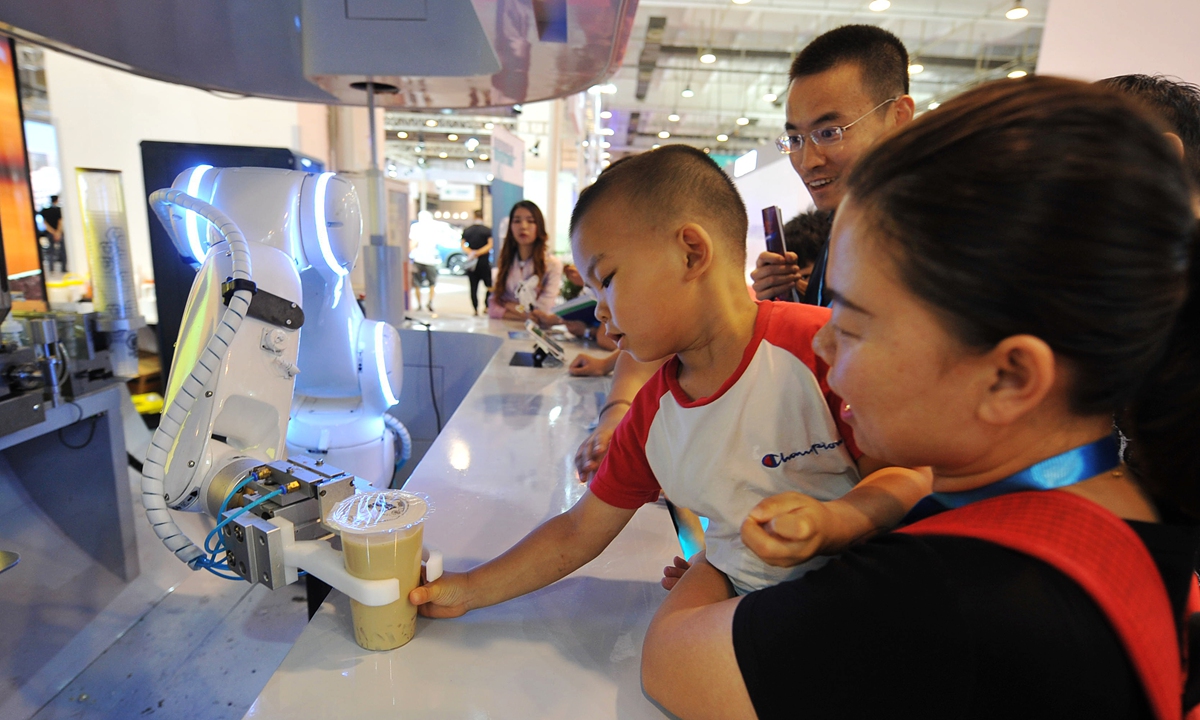
A kid takes a cup of milk tea made by a robot. Photo: VCG
Going overseasWhile Chinese milk tea brands have domestic consumers flipping head over heels, this unique drinking culture is also increasingly gaining popularity overseas.
Taking leading brand Heytea as an example. It has opened flagship stores in countries like the UK, the US, Canada and Australia since 2023. At its flagship store in New York, the US, more than 2,500 cups were sold on its opening day.
Other Chinese brands like Mixue Ice Cream & Tea, Naixue and Chapanda are also blossoming in many Asian countries like Japan, Thailand, Singapore and South Korea.
Marketing expert Zhu Xun told the Global Times that the successful rapid expansion of Chinese beverage shops stems from factors such as "cheap pricing and diversity," "localized products" as well as the strategy of promoting drinks as "lifestyle products."
Situated in London's most vibrant urban heart, SOHO, Heytea has quickly become a hot shop that engages not only overseas Chinese students, but also locals.
"It gives me a taste of home, and also magically contributed to my social life since my British friends and I hang out a lot there. Grabbing a bubble tea is a lifestyle members of the young generation share regardless of nationality or upbringing," Mia Tian, a Chinese student in London, told the Global Times.
What has allowed Chinese beverage brands to be favored by tea-obsessing nations like the UK is "culture," cultural sociologist Xu noted.
Xu said that in overseas countries, milk or iced tea products from Chinese companies are also an "embodiment of how seamlessly China's traditional culture blends with modern lifestyles."
The Chinese character xi, meaning "happiness," decorates the foam layer of every cup of Heytea tea in London. Intrigued social media users enjoy posting photos of the special decoration online, making it a smart way to promote Chinese culture.
Traditional Chinese snacks such as taro balls and home-grown Pu'er and Dian Hong tea and even traditional Chinese medicine like astragalus root are still used in products sold at stores crowded with young consumers.
Unlike plain plastic cups, Chinese tea's packaging is often decorated with drawings and patterns referencing traditional calligraphy works and ink wash paintings. These elements allow international gourmets to see how the tea culture in China has been inherited with creativity.
Transforming perception
In Fuding, East China's Fujian Province, the renowned originator of white tea, some teahouses have been exploring new ways to blend traditional tea culture with new fashion to draw the attention of younger consumers.
Huang Hongxin, chief of the Tong Shun Tai Teahouse founded in the Qing Dynasty (1644-1911), told the Global Times on Tuesday that they have been trying to improve the flavor of white tea to change young people's perception of tea drinking.
"We have incorporated the benefits of white tea into everyday beverages by developing some new products. Using cold brew technology, we have removed the caffeine from the tea, enhancing the tea's refreshing taste. While removing the caffeine, we have retained the theanine, which gives this cold brewed white tea a calming and sleep-promoting effect, which is contrary to people's perception that tea negatively affects one's sleep," Huang said.
White tea ice cream is another innovation. Through 24 hours of low-temperature brewing and extraction, bitter compounds like caffeine are avoided, while the extraction of refreshing amino acids is promoted. Instead of tasting bitter and astringent, white tea ice cream has a fresh and invigorating taste, Huang noted.
Taking advantage of the anti-bacterial nature and floral aroma of white tea, Huang said the producers have also developed white tea soap, foams and fragrances.
Ancient Chinese tea culture is profound and rich. Through continuous innovation and development, this tea culture is being integrated into everyday life, allowing it to catch up with the modern Guochao trend, he said.
